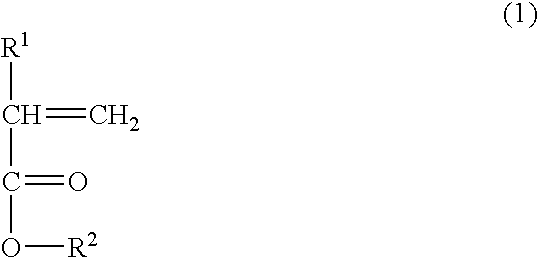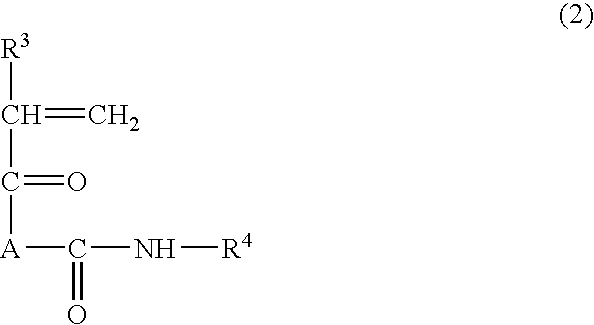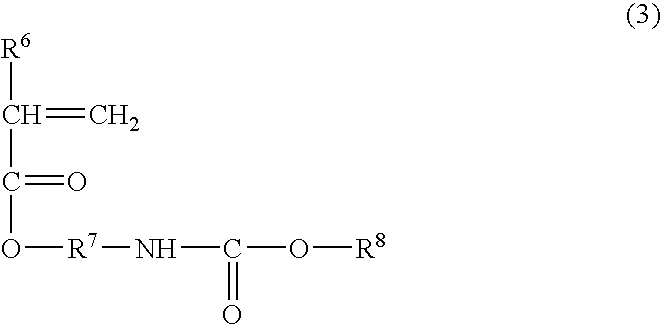Modified hollow-fiber membrane
a hollow fiber membrane and membrane surface technology, applied in the field of hollow fiber membranes with modified membrane surfaces, can solve the problems of impairing the permeability performance unable to completely satisfy the requirements of hollow fiber membranes, and blood to easily coagulate, so as to achieve the effect of free from deterioration in performan
- Summary
- Abstract
- Description
- Claims
- Application Information
AI Technical Summary
Benefits of technology
Problems solved by technology
Method used
Image
Examples
example 1
[0047]18 parts of polysulfone (“Ultrason S3010” manufactured by BASF) was added to a mixture of 57 parts of N,N-dimethylacetamide (DMAC) and 25 parts of tetraethylene glycol (TEG). The mixture was stirred for 6 hours at 60° C. and dissolved to obtain a membrane-forming raw material solution. The raw material solution maintained at a temperature of 45° C. was discharged from spinnerets with an annular orifice together with a 40% aqueous solution of DMAC, to which 1% of a copolymer of MPC and methacryloyloxyethyl phenyl carbamate (MPC monomer unit content=0.31, molecular weight=109,000) was added as an internal coagulate solution. The spun raw material was passed through a water bath, placed 36 cm lower than the discharge nozzle, at 55° C. to be wound around a reel, and washed with hot water at 90° C. to remove any excess copolymer and the solvent. The resulting hollow fiber membrane was confirmed to have a water permeability of 325 ml / m2·mmHg·hr, an MPC copolymer concentration on the...
example 2
[0048]A hollow fiber membrane was prepared in the same manner as in Example 1, except for using a 40% aqueous solution of DMAC, to which 1% of a copolymer of MPC and butyl methacryate (MPC monomer unit content=0.40, molecular weight=122,000) was added as an internal coagulate solution. The resulting hollow fiber membrane was confirmed to have a water permeability of 299 ml / m2·mmHg·hr, an MPC copolymer concentration on the inner side surface of 18 wt %, and a bulk concentration of 0.2 wt %. The absorbance of the extract obtained from the hollow fiber membrane determined by the elusion material measurement method was 0.025.
example 3
[0049]A hollow fiber membrane was prepared in the same manner as in Example 1, except for using a 40% aqueous solution of DMAC, to which 1% of a copolymer of MPC and phenyl methacryloyloxyethyl carbamate (MPC monomer unit content=0.28, molecular weight=160,000) was added as an internal coagulate solution. The resulting hollow fiber membrane was confirmed to have a water permeability of 280 ml / m2·mmHg·hr, an MPC copolymer concentration on the inner side surface of 15 wt %, and a bulk concentration of 0.3 wt %. The absorbance of the extract obtained from the hollow fiber membrane determined by the elusion material measurement method was 0.018.
PUM
| Property | Measurement | Unit |
|---|---|---|
| contact angle | aaaaa | aaaaa |
| contact angle | aaaaa | aaaaa |
| contact angle | aaaaa | aaaaa |
Abstract
Description
Claims
Application Information
 Login to View More
Login to View More - R&D
- Intellectual Property
- Life Sciences
- Materials
- Tech Scout
- Unparalleled Data Quality
- Higher Quality Content
- 60% Fewer Hallucinations
Browse by: Latest US Patents, China's latest patents, Technical Efficacy Thesaurus, Application Domain, Technology Topic, Popular Technical Reports.
© 2025 PatSnap. All rights reserved.Legal|Privacy policy|Modern Slavery Act Transparency Statement|Sitemap|About US| Contact US: help@patsnap.com



